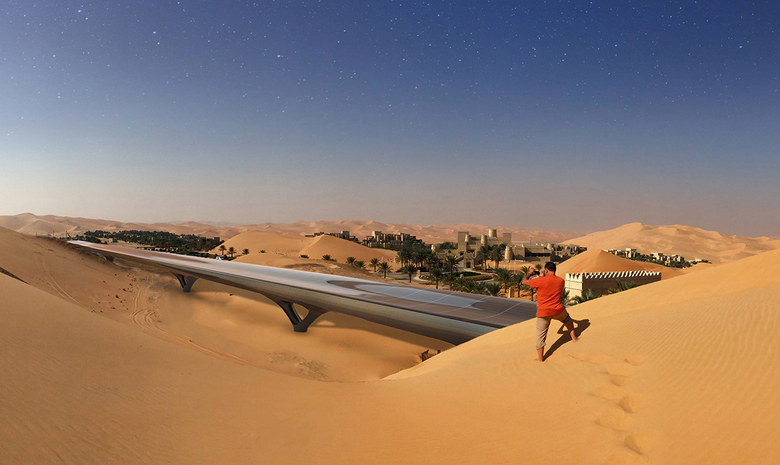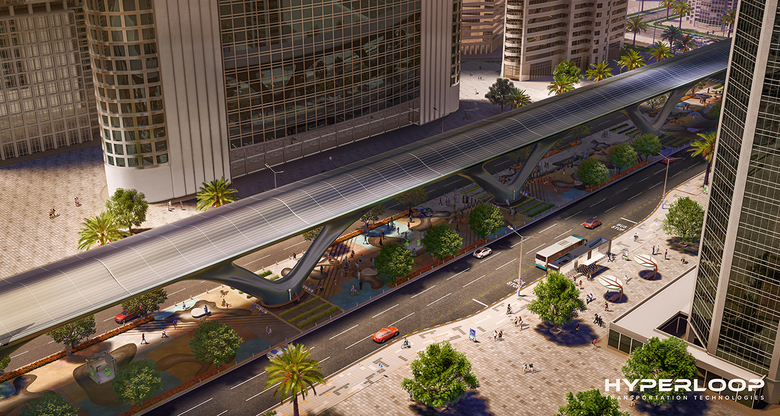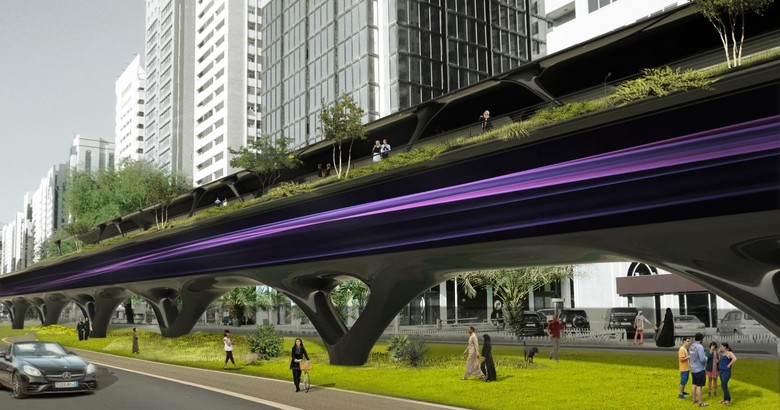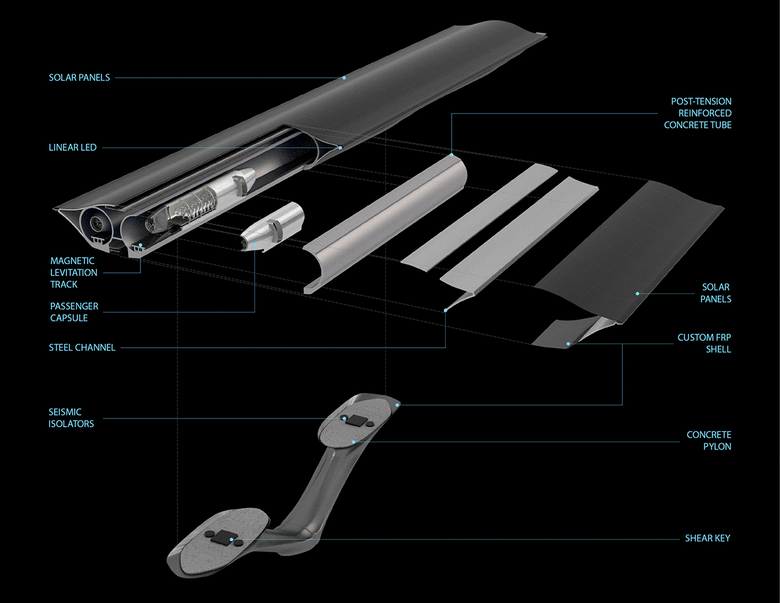MAD's Hyperloop Dreams
John Hill
11. 9月 2019
Image courtesy of MAD Architects/HyperloopTT
MAD Architects has released renderings of an elevated rapid transport system they've designed in collaboration with Hyperloop Transportation Technologies (HyperloopTT).
HyperloopTT, founded in 2013, is one of a few companies rushing to realize the first usable Hyperloop, the system developed by Elon Musk to move people and cargo via capsules in low-pressure tubes. MAD's infrastructural design features splayed concrete pylons and long spans that enable the Hyperloop to be inserted into various contexts, be it urban areas or in the desert, as depicted here.
Image courtesy of MAD Architects/HyperloopTT
As it cuts through cities, Hyperloop's elevated structure would potentially be used for shading pedestrian areas below it, while one rendering (below) illustrates how even the top of the tube, normally fitted with solar panels, could incorporate raised walkways.
Image courtesy of MAD Architects/HyperloopTT
So that it doesn't resemble a typical highway overpass, the underside of Hyperloop's concrete tubes would be wrapped by a custom FRP (fiber-reinforced plastic) shell, the flip side of the bendable solar panels applied to the top. The solar panels and FRP shell would pinch at the ends, with the edge illuminated by linear LED lights. The solar panels would power the LEDs as well as the capsules themselves, which would also be powered by wind turbines "forests" located along certain sections of the Hyperloop.
Image courtesy of MAD Architects/HyperloopTT
According to MAD's press release, "MAD first worked with HyperloopTT on the occasion of the 2020 Expo in Dubai. Since then, HyperloopTT has partnered with the Port of Hamburg to develop a cargo system; and revealed a full-scale 320m passenger system in Toulouse, France, that is currently in the process of integrating its full-scale passenger capsule for human trials in 2020." With Virgin Hyperloop One, HyperloopTT's main competitor, debuting its "passenger experience" at Dubai Expo 2020, it's looking like 2020 will be the year of Hyperloop.



